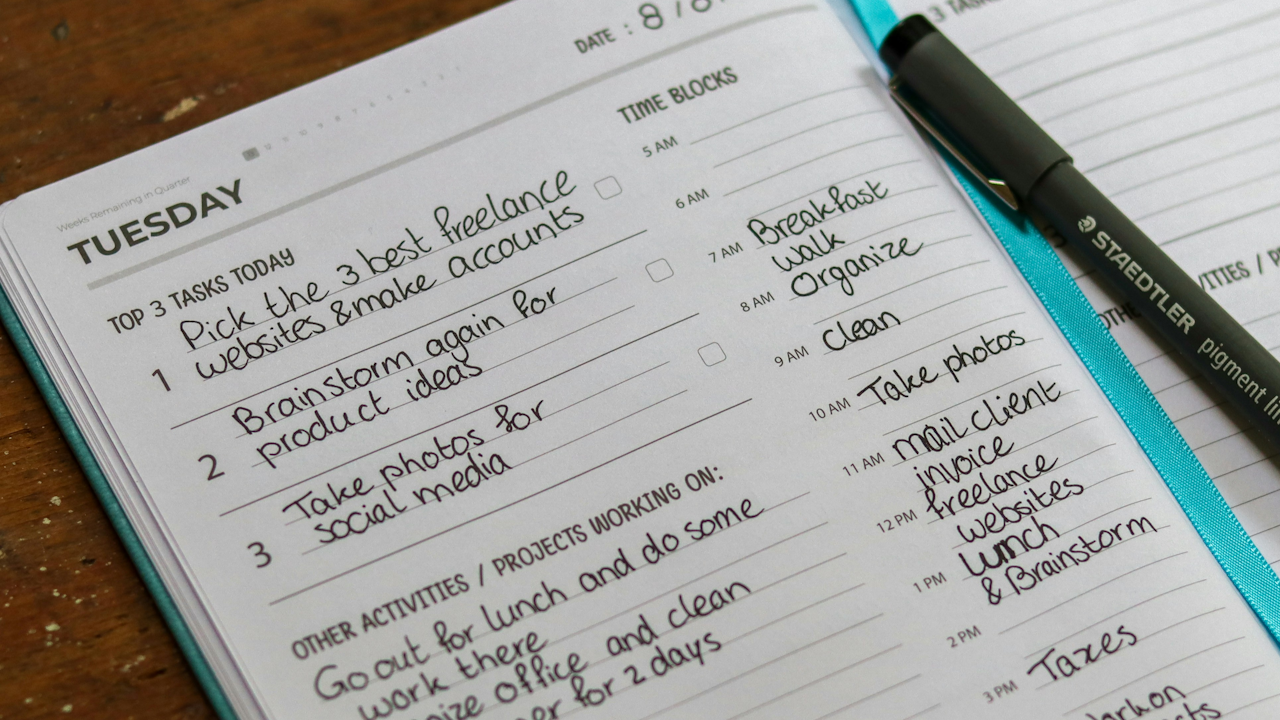In today’s fast-paced work environment, professionals often find themselves juggling multiple projects, deadlines, and responsibilities. Feeling overwhelmed and struggling to manage time effectively is a common experience. However, with the right strategies, it’s possible to gain control of your schedule, boost productivity, and achieve a better work-life balance. This article explores practical time management techniques tailored for professionals with busy schedules.
Prioritization: The Cornerstone of Effective Time Management
Prioritization is the ability to discern which tasks are most critical and allocate your time and energy accordingly. Not all tasks are created equal; some have a greater impact on your goals and objectives than others. Employing prioritization techniques can help you focus on high-value activities and avoid getting bogged down by less important ones.
The Eisenhower Matrix: This powerful tool categorizes tasks based on their urgency and importance. Tasks are divided into four quadrants:
- Do First: Urgent and important tasks that require immediate attention.
- Schedule: Important but not urgent tasks that should be scheduled for later.
- Delegate: Urgent but not important tasks that can be delegated to others.
- Eliminate: Neither urgent nor important tasks that should be eliminated.
The Pareto Principle (80/20 Rule): This principle suggests that 80% of your results come from 20% of your efforts. Identifying those crucial 20% of tasks and focusing on them can significantly improve your productivity.
Planning and Organization: Setting the Stage for Success
Effective planning and organization are essential for managing a busy schedule. By creating a clear roadmap for your day, week, and month, you can stay focused, avoid procrastination, and ensure that important tasks are not overlooked.
- Time Blocking: This technique involves allocating specific time slots for different tasks or activities. By scheduling your day in advance, you create structure and ensure that you dedicate sufficient time to each task.
- To-Do Lists: Creating a comprehensive to-do list can help you keep track of all your tasks and deadlines. Break down large projects into smaller, more manageable tasks and prioritize them based on their importance and urgency.
- Utilize Technology: Numerous digital tools and apps can assist with planning and organization. Calendar apps, task management software, and note-taking apps can help you stay organized, set reminders, and track your progress.
Eliminate Time Wasters and Distractions
Time wasters and distractions can significantly hinder your productivity and make it difficult to manage your time effectively. Identifying and eliminating these time sinks is crucial for maximizing your efficiency.
- Minimize Interruptions: Set aside specific times for checking emails and responding to messages. Avoid constantly checking your inbox or social media, as this can disrupt your focus and lead to wasted time.
- Avoid Multitasking: While it may seem like multitasking can help you get more done, studies have shown that it actually reduces productivity and increases errors. Focus on one task at a time to improve your efficiency and quality of work.
- Learn to Say No: Overcommitting yourself can lead to stress and burnout. It’s important to learn to say no to additional tasks or commitments when you’re already overloaded.
Optimize Your Work Environment
Your work environment can significantly impact your productivity and ability to manage your time effectively. Creating a conducive work environment can help you stay focused, motivated, and efficient.
- Organize Your Workspace: A cluttered and disorganized workspace can lead to wasted time searching for items and can also be a source of distraction. Take the time to organize your workspace and ensure that everything is in its place.
- Minimize Noise and Distractions: If possible, work in a quiet environment where you can focus without interruptions. If you work in a noisy office, consider using noise-canceling headphones.
- Take Regular Breaks: It may seem counterintuitive, but taking regular breaks can actually improve your productivity. Short breaks can help you recharge your batteries, clear your mind, and return to your work with renewed focus.
Continuous Improvement and Adaptation
Time management is not a one-size-fits-all approach. What works for one person may not work for another. It’s important to continuously evaluate your time management strategies and make adjustments as needed.
- Track Your Time: Monitoring how you spend your time can help you identify time wasters and areas where you can improve your efficiency.
- Reflect and Adjust: Regularly reflect on your time management practices and identify what’s working and what’s not. Be willing to adjust your strategies to better suit your needs and circumstances.
- Seek Feedback: Ask colleagues or mentors for feedback on your time management skills. They may offer valuable insights and suggestions for improvement.
By implementing these time management strategies, professionals with busy schedules can gain control of their time, boost productivity, and achieve a better work-life balance. Remember that consistency and continuous improvement are key to mastering time management and achieving your goals.

